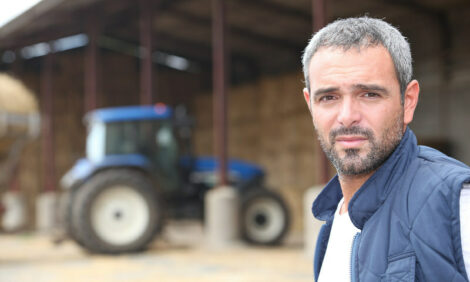



Pork Commentary: Record Hog Slaughter
CANADA - This weeks North American Pork Commentary from Jim Long.We now know that the US packing industry can slaughter 2.321 million head in a week. That’s what it did last week. A record number, far surpassing the previous record weekly slaughter of 2.246 million. The most efficient packing industry in the world is delivering in spades. Without this capacity, hog prices would be in freefall. To say that lean hog price of 55.71 (Iowa-Minnesota) is a miracle in the face of this record production is probably not an overstatement. Whether we can sustain mid 50’s in prices if we continue to have weeks upon weeks of 2.250 million plus is a big question. We know we can slaughter that number but what price will it take to keep the meat cleared. An optimistic note. One prediction production model is indicating the yearly weekly slaughter has peaked. Let’s hope so.
It appears to us that the circo-virus vaccines are working. Reminds us of listening to Larry Pope, CEO of Smithfield, three years ago at the Lake of the Ozarks conference, when he said and we paraphrase, “PRRS is the producer’s friend. Without PRRS, we would be overwhelmed by hogs.” PRRS is still with us, as the vaccines for PRRS are mostly useless. Circo-virus (PWMS) on the other hand, after cutting production with mortality and morbidity, has been limited greatly by vaccines that work. We believe the resulting mortality and morbidity is creating this increase in hog numbers. The reality is that we would all be better off financially with markets from 3% fewer hogs. The inelastic supply-demand curve of hog pricing can be quite unforgiving. In Asia, in the last few weeks, we saw the reverse. Circo-virus (PWMS) is out of control – they have high mortality. The consequential cut in production has lead to prices that have allowed $100 a head profits. Larry Pope was right three years ago, and still is.
Allen D Leman Swine Conference
We were in Asia when the annual Allen D. Leman Swine Conference was held at the University of Minnesota. We weren’t there, obviously, but we have read the abstracts and have had verbal reports.
Steve Dritz DVM PhD delivered the Hanson Lecture. It was compiled by the Kansas State University Applied Nutrition team. The title of the lecture was “The Science of Pig Production; Past, Present and Future.”
Using Swine Graphic Inc data from 1987 to present, the Kansas group had these observations:
- There was little change in feed efficiency prior to 1995 (note – high feed prices 1996). Since 1996, feed efficiency has improved at a 2.3% annual rate. The change from 1995 to 2006 represents a 138 lb reduction in feed usage per pig or 4.8 semi-loads of feed every day of the year at the current Swine Graphic Inc system size (we believe this improvement would have gained by many producers who use leading genetics).
- Growth rate in the Swine Graphics system has improved similar to feed conversion. Little improvement in gain from 1987 to the mid 90’s. Since 1998, an average 2% improvement in ADG per year. Assuming the same average market weight, the changes in growth rate from 1998 to present would result in 25.4 fewer days to market and a reduction in contract grower fees of $1.54 million per year at the current weaned pig numbers.
- Average market weight was relatively constant until mid 1990’s and then increased to present 285 pound average (1987-234 lbs, 2006-285 lbs) What’s really interesting is turn days per group has been relatively constant. The similar turn days and increased growth rate has resulted in over a 20% increase in the pounds produced per pig space. While contract grower fees have remained relatively consistent over the time period, the contract grower cost per pound has actually decreased because of the increase in productivity.Table below.
| Comparison of Finishing Floor Productivity Between 1985 and 2006 (Swine Graphics Inc.) |
||
| Item | 1985 | 2006 |
|---|---|---|
| Gain, lb | 185 | 235 |
| Days on Feed | 119.4 | 127 |
| Turn Days | 140.4 | 141.1 |
| Turn/Year | 2.6 | 2.6 |
| Lb/Pig Space | 611 | 737 |
| Change | +20% | |
In regard to mortality plus culls, the productivity changes have been less consistent.
1994 – 3.8%
2000 – 1.8%
2004 – 3.0%
2006 – 2.3%
Looks to us like the genetic industry had delivered on the capacity to grow, convert feed and carry heavier carcasses. Maybe, somewhere along the way, the health industry has lagged in coming up with products and schemes to lower mortality.
PCV2 Vaccine
Kansas State field studies show that vaccinated PCV2 pigs have increased growth rates of 10%, resulting in almost 20lb heavier pigs marketed at a similar age as unvaccinated pigs (why we have more pigs this fall?). Two field studies had vaccinated pigs showing $3.94 and $8.58 advantage over unvaccinated pigs. Combination of better growth rate (heavier carcasses) and better feed conversion.
At the end of the lecture, it was the words of Al Leman 20 years ago, at the same conference.
They are as relevant now as then!
- Would I hire myself
- Use producer support groups and ranking farms
- Develop training programs for hired managers
- Analyze existing information
- Become a system analyst
- Seek out the best producers as clientele
- Concentrate on reducing costs
- Become an advocate of animal welfare
- Broaden disease control options
- Develop the courage to say, “The best action in this case, is take no action.”
Al Leman’s list of guiding points is as appropriate today as twenty years ago.
The more things change, the more they stay the same.








